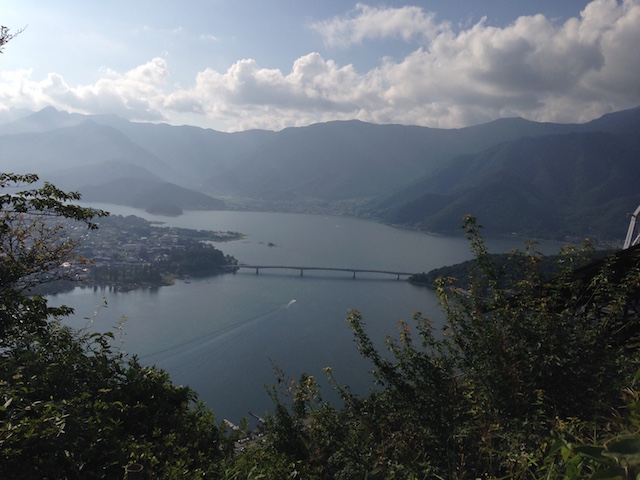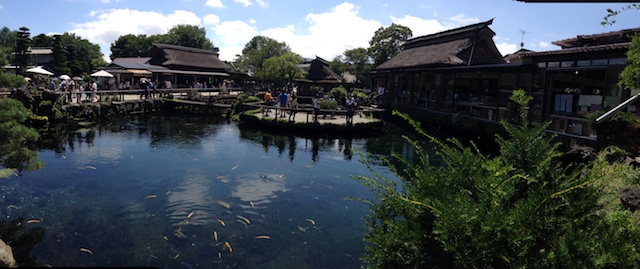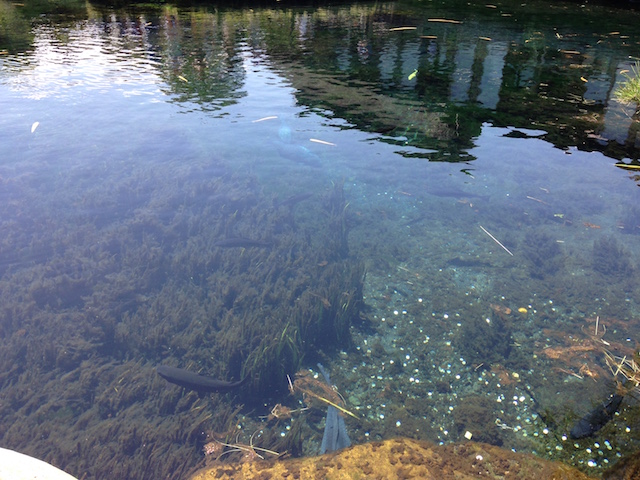We took the Chuo Line at Kanda Sation in Tokyo early in the morning and headed for Kofu, Yamanashi. This railway line is very long connecting Tokyo and Nagoya, and we stopped at Kofu City and then Nagiso in Nagano during out trip.
Yamanashi Prefecture is located to the west of Tokyo, very famous for Mt.Fuji. Every year and all year round many people visit this area for many kinds of activities.
Kawaguchi-ko (Lake Kawaguchi)
Our first destination was Lake Kawaguchi. It is one of the five lakes (called Fuji-goko, literally meaning the five lakes of Fuji), situated at the foot of Mt.Fuji. These lakes were created by volcanic activities, and each one has its beautiful and unique landscape.
The reason why we chose Lake Kawaguchi is its easy access. It is very convenient for someone traveling by train, taking about two hours from Tokyo.
Kawaguchi-ko sightseeing information site (English)
We visited Mt.Kachi Kachi Ropeway. If you are lucky you can see a panoramic view of Mt.Fuji, but most of the time it is covered with cloud…

History of Fuji-goko (Fuji Five Lakes)
Fuji-goko includes Motosu-ko, Shoji-ko, Sai-ko, Kawaguchi-ko, Yamanaka-ko. These five lakes were under the sea about 5 million years ago. That means Mt.Fuji was also hiding under the water…
The Old Izu Peninsula, which was just an island in the prehistoric times, hit the main land as it moved toward the north rinding on the Pacific Plate.
700,000〜200,000 years ago, three volcanoes started to be active. Mt.Old Hakone, Mt. Komitake, and Mt. Ashitaka erupted, which generated massive energy.
Old Hakone Volcano lost its mountain peak and formed a lake called Lake Ashinoko, which is another touristic site on the border between Shizuoka and Kanazawa Prefecture, to the southeast of Yamanashi.
80,000〜15,000 years ago, in the location between Komitake and Ashitaka Volcano, where present-day Mt.Fuji stands, erupted Old Fuji Volcano.
This eruption created two lakes: Lake Utsu-ko (Yamanaka-ko, Osino-ko) and Lake Old Senoumi (Kawaguchi-ko, Sai-ko, Shouji-ko, Motosu-ko).
15,000〜10,00 years ago, along with the continuous volcanic activities of Old Fuji Volcano, Old Kawaguchi-ko was formed by being blocked off Old Senoumi.
11,000〜7,000 years ago, at the same spot, New Fuji Volcano erupted. A number of volcanic activities contributed to forming the unique natural landscape in the Five Fuji Lakes area.
Old Kawaguchi-ko and Utsu-ko dried up and disappeared, and only Old Senoumi remained.
5,000〜2,000 years ago, as New Fuji Volcano erupted repeatedly, the lava flowed into Old Senoumi and gave birth to Motosu-ko. And Kawaguchi-ko was also made after the river was blocked by the lava.
In AD 864, the lava continued to flow over Senoumi and divided the lake into two parts. One is called Sai-ko, and the other is called Shouji-ko.
In AD 937, another river was blocked by the lava, and it became Yamanaka-ko.
Since 1707, Mt. Fuji has been always sleeping, and these five lakes have kept their landscapes for about a thousand years.

Springs of Mt Fuji – Oshinohakkai
There used to be a lake called Oshino-ko, but it all dried up. But some springs which function as gushing points of subsoil water from Mt.Fuji are found at Oshino Village. The water was used for drinking and agricultural use before, and today this small village attracts a lot of tourists.

The water is really clear, and they say it is like fish are flying in the sky!


Oshino Navi (English)
Oshinohakkai is also part of the World Heritage site registered In 2013, under the name of Fujisan, sacred place and source of artistic inspiration.